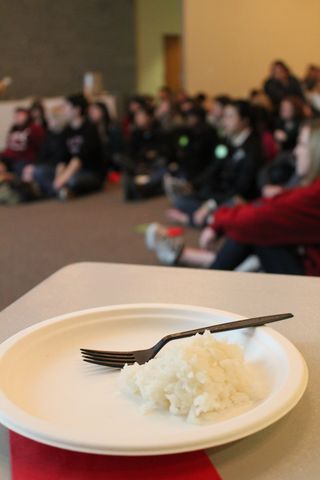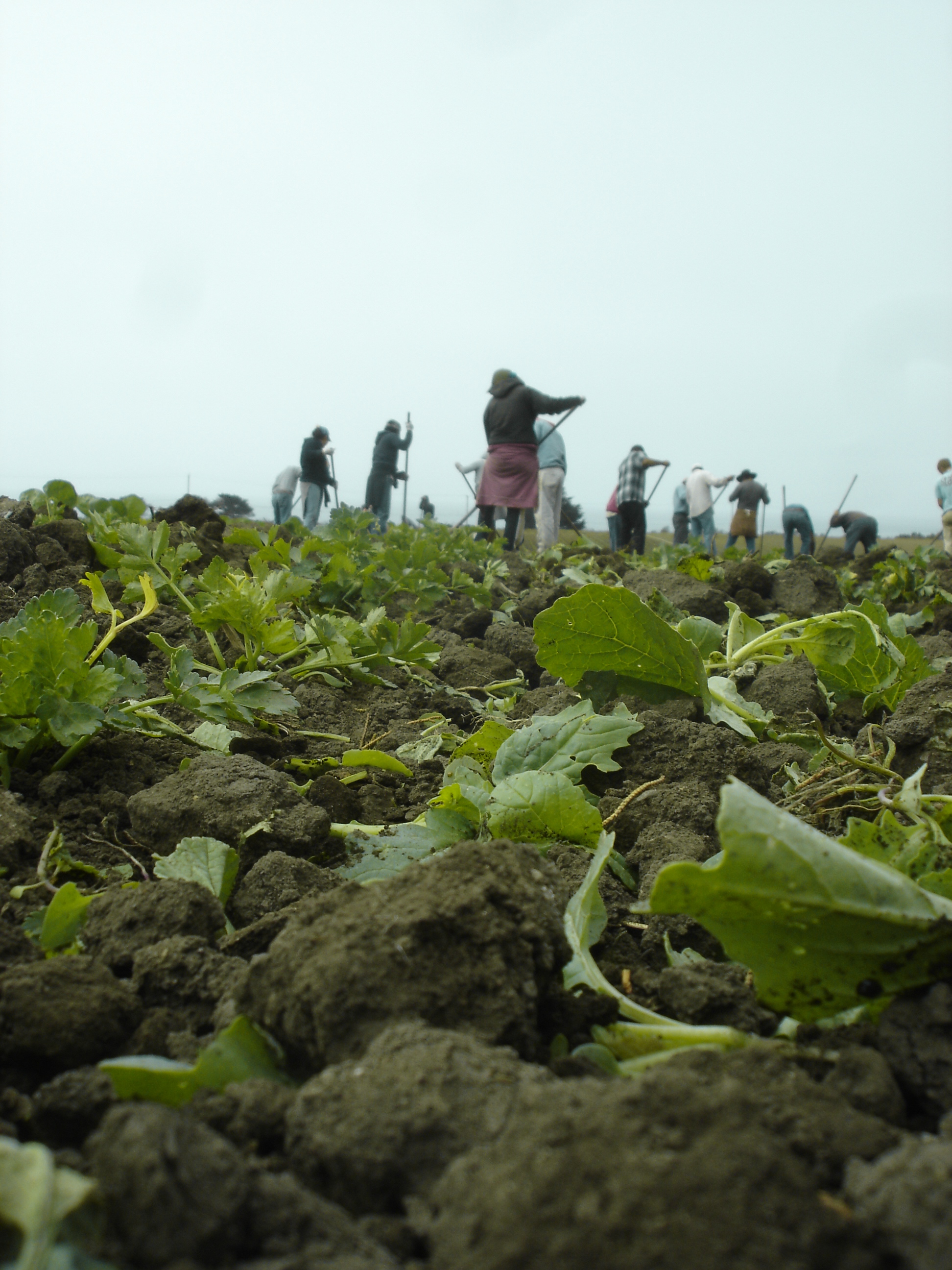Thinking about hunger, farm workers, and women in the fields
- by Vera Chang
 The Oxfam Hunger Banquet is the only banquet I’ve ever attended where I was served just rice and water.
The Oxfam Hunger Banquet is the only banquet I’ve ever attended where I was served just rice and water.
The banquet, held March 7 at Seattle University, makes the inequalities of our world vividly clear in order to raise awareness about the experience of hunger and get people thinking and talking about how to take action to fight poverty.
Guests are assigned to different income tiers via lottery as they enter the room; the tiers represent the statistical breakdown of incomes worldwide. So the 70 people assigned as “low income” got rice and water; the 50 “middle income” folks got rice, beans, and water; and the lucky 12 assigned as “high income” dined (with china and linens) on Caesar salad, pasta Bolognese, and tiramisu, accompanied by assorted beverages.
It’s an unusual catering menu for Bon Appétit at Seattle University, which has been donating the food for this event for the past 10 years. This is one of the rare times when fewer than half of our Bon Appétit guests are invited to enjoy a prepared-from-scratch meal that showcases seasonal, local flavors, and our chefs’ culinary expertise.
I drew a “low income” ticket and ate my rice in solidarity with the sea of cross-legged participants eating on the floor. I’m used to three-plus hardy meals a day that include fresh produce, whole grains, and proteins. My stomach growled in complaint. I hoped that the microphones didn’t pick up on it. I thought about how hard it must be to get accustomed to hunger.
There are more than 900 million people in the world who experience hunger, according to Oxfam. Though women produce most of the world’s food as planters and harvesters, they are often the hungriest and bear the brunt of multiple kinds of inequality. In the United States, the food chain is built on the backs those who are food-insecure. Vulnerable and marginalized with few protections and low wages, farm work is often characterized by worker abuse and a lack of health safeguards or worker safety practices.
Female farm workers, however, suffer the most. Only one in every five farm workers is female; perhaps for good reason. During my brief time working in commercial strawberry and broccoli fields, I tried to adjust my attire to fit in (as much as possible) with the women around me, who wore baggy jeans, baseball caps, long-sleeve shirts, and shirts tied around their waists. Such outfits were not just practical for picking or protective against spray or the elements, they also obscured their bodies and gender. This was my first clue that women farm workers face more than the usual challenge of hard and underpaid work in the fields.
Women farm workers, who often also have to find and juggle child care, generally earn less than their male counterparts (PDF). Women working in the fields are, according to a California attorney, ten times more vulnerable to sexual assault and harassment than other American workers. In some places, rape of women by their supervisors so common that fields are known as “The Green Motel” and “Field de Calzon” (Field of Panties). (See these great articles by Twilight Greenaway and Ms. Magazine.) Sexual assault is far more common than is attention to it.
My concern with the human rights of all farm workers, and especially female farm workers, was the foundation of the talk I gave at Seattle University’s Hunger Banquet. This past Tuesday was International Women’s Day, and April is Sexual Assault Awareness Month. Let’s continue to celebrate the work of farm workers and, as we do, let us also consider women’s often unappreciated and undercompensated contribution to our food system. We need to break the cycle of abuse and silence.
To find out more and get involved in issues of farm worker sexual assault, check out The Bandana Project, Lideres Campesinas, and The Amparo Project.
 Working alongside farmworkers in broccoli fields, California
Working alongside farmworkers in broccoli fields, California